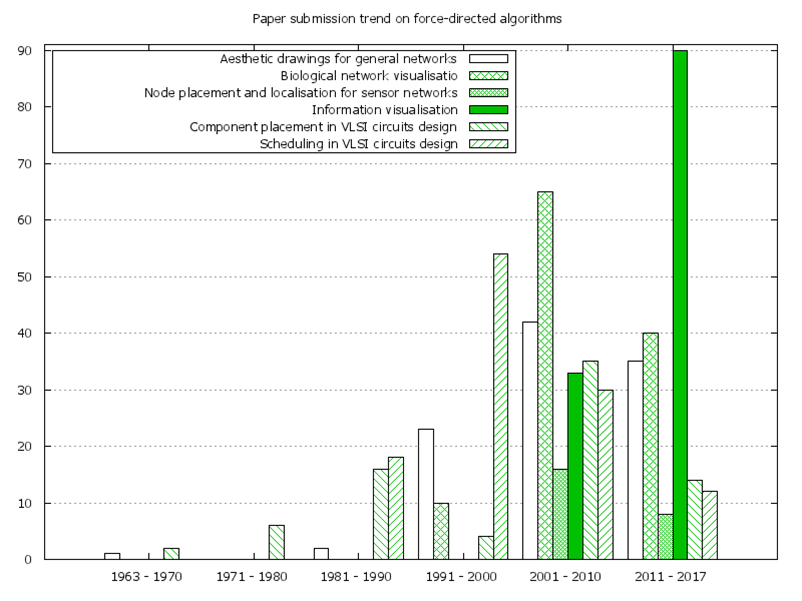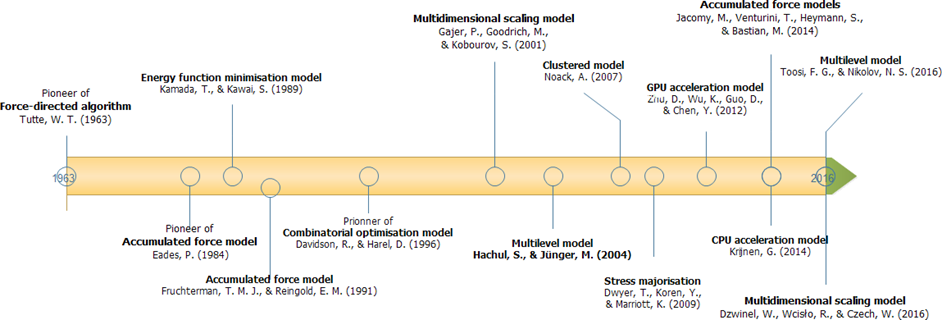Force-directed algorithms have been developed over the last 50 years and used in many application fields, including information visualisation, biological network visualisation, sensor networks, routing algorithms, scheduling, graph drawing, etc. Our survey provides a comprehensive summary of developments and a full roadmap for state-of-the-art force-directed algorithms in schematic drawings and placement.

We classified the model of force-directed algorithms into classical and hybrid. The classical force-directed algorithms are further classified as follows: (a) accumulated force models, (b) energy function minimisation models, and (c) combinatorial optimisation models. The hybrid force-directed algorithms are classified as follows: (a) parallel and hardware accelerated models, (b) multilevel force-directed models, and (c) multidimensional scaling force-directed algorithms. Five categories of application domains in which force-directed algorithms have been adopted for schematic drawings and placement are also summarised: (a) aesthetic drawings for general networks, (b) component placement and scheduling in high-level synthesis of very-large scale integration (VLSI) circuits design, (c) information visualisation, (d) biological network visualisation, and (e) node placement and localisation for sensor networks.


The author’s version of a work that was accepted for publication can be downloaded from http://eric.lostcity-studio.com/wp-content/uploads/2019/08/Force-directed-algorithms-for-schematic-drawings-and-placement:a-Survey.pdf. Se-Hang Cheong, Yain-Whar Si. "Force-directed algorithms for schematic drawings and placement: A survey", Information Visualization, Accepted and to appear, Sage, 2019.